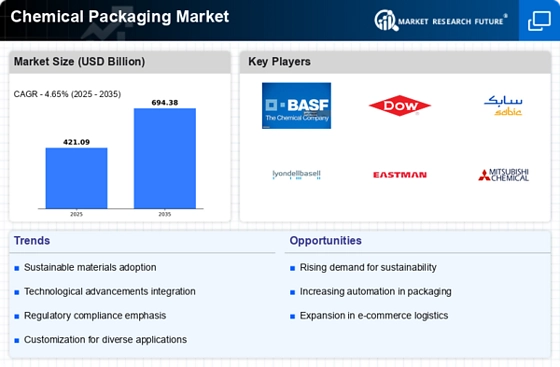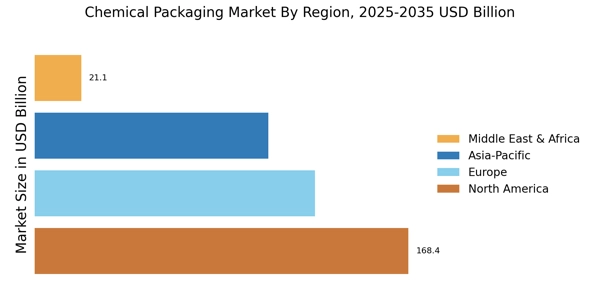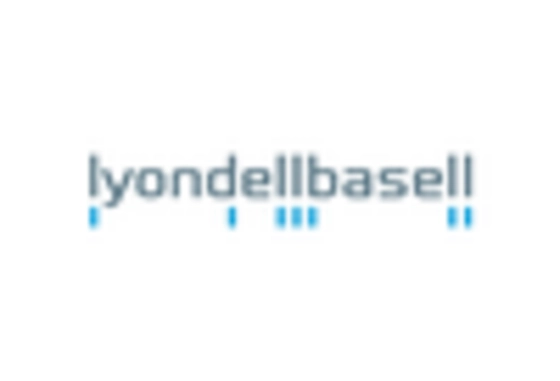The Chemical Packaging Market is currently characterized by a dynamic competitive landscape, driven by increasing demand for sustainable packaging solutions and innovations in material science. Key players such as BASF SE (Germany), Dow Inc. (United States), and SABIC (Saudi Arabia) are strategically positioning themselves to capitalize on these trends. BASF SE (Germany) focuses on developing advanced materials that enhance the performance and sustainability of chemical packaging, while Dow Inc. (United States) emphasizes digital transformation and smart packaging technologies. SABIC (Saudi Arabia) is actively pursuing partnerships to expand its product offerings and enhance its market reach, collectively shaping a competitive environment that prioritizes innovation and sustainability.
In terms of business tactics, companies are increasingly localizing manufacturing to reduce lead times and optimize supply chains. The market structure appears moderately fragmented, with a mix of large multinational corporations and smaller regional players. This fragmentation allows for diverse offerings and competitive pricing, yet the influence of key players remains substantial, as they set industry standards and drive technological advancements.
In August 2025, BASF SE (Germany) announced a collaboration with a leading packaging manufacturer to develop biodegradable packaging solutions aimed at reducing plastic waste. This strategic move underscores BASF's commitment to sustainability and positions the company as a leader in eco-friendly packaging innovations. The partnership is expected to enhance BASF's product portfolio and appeal to environmentally conscious consumers, thereby strengthening its competitive edge.
In September 2025, Dow Inc. (United States) launched a new line of smart packaging solutions that integrate IoT technology to monitor product conditions throughout the supply chain. This initiative not only enhances product safety but also provides valuable data analytics for manufacturers. By leveraging digital technologies, Dow is likely to improve customer engagement and operational efficiency, reinforcing its market position in the rapidly evolving packaging landscape.
In July 2025, SABIC (Saudi Arabia) expanded its production capacity for high-performance polymers used in chemical packaging. This expansion is indicative of SABIC's strategy to meet the growing demand for durable and lightweight packaging materials. By increasing its production capabilities, SABIC aims to solidify its market presence and respond effectively to customer needs, thereby enhancing its competitive stance in the global market.
As of October 2025, current competitive trends in the Chemical Packaging Market include a pronounced shift towards digitalization, sustainability, and the integration of artificial intelligence in packaging solutions. Strategic alliances are increasingly shaping the landscape, enabling companies to pool resources and expertise to innovate more effectively. Looking ahead, competitive differentiation is likely to evolve from traditional price-based competition to a focus on innovation, technological advancements, and supply chain reliability, as companies strive to meet the demands of a more environmentally conscious and technologically savvy consumer base.


















Leave a Comment